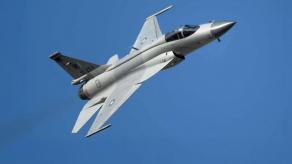Ukrainian defense companies and start-ups are actively advancing the development of unmanned aerial vehicles (UAVs) to enhance the lethality of equipment used by Ukrainian Defense Forces in destroying weapons and manpower of the russian invasion army. These efforts include both improving existing UAV characteristics and integrating new functionalities.
One key area of modernization is the integration of artificial intelligence (AI), with several startups focusing on creating AI systems to enable operators to control swarms of drones. First of all, this technology aims to increase the effectiveness of drone strikes under enemy electronic warfare (EW) suppression, according to Reuters.
Read more: Ukraine's Biggest FPV Drone, the Hornet Queen, Revealed: Bomber, Kamikaze, Minelayer, Mothership
Currently, the Ukrainian military employs various drones equipped with so-called "machine vision" technology, which allows for automatic target recognition, lock-on, and strike without need for the operator to control all steps manually.
For instance, earlier Defense Express mentioned Wild Hornets with their development and testing of FPV drones with machine vision. Among foreign projects, a notable example is the Skynode S versatile machine vision for drones from a U.S.-based Auterion company.
By using an open architecture format, Auterion is able to bring customize the end users' ecosystem. We bring manufacturers of the best capabilities together on one network, allowing full customization of your fleet. pic.twitter.com/F1uWBkmC4U— Auterion (@auterion) March 14, 2024
Reuters' article, meanwhile, focuses on the creations by Swarmer, a company developing software to unite groups of drones into a coordinated flock capable of autonomously performing battlefield missions. The operator's role is limited to approving target destruction — which is still important to avoid potential program errors.
The system, named Styx, can manage swarms of aerial drones (both reconnaissance and attack) or unmanned ground vehicles. As noted, each unit will be capable of planning its own route and predicting the movements of other swarm members.
Serhii Kupriienko, CEO of Swarmer, emphasizes that this technology will have a positive effect on ensuring the drone operator's safety. As witnessed on Ukrainian battlefields, operators of FPV drones and other unmanned systems are priority targets due to the significant damage inflicted by various killer drones on the Russian invasion army.

AI technologies will also improve drone performance under EW jamming. Maksym Makarchuk, head of the AI department at Brave1 tech cluster, provides the following statistics: currently, FPV drone strike effectiveness is about 30–50%, dropping to 10% for novice operators. AI could potentially increase this effectiveness to around 80%.
Moreover, AI-based systems will enable the coordination of far more drones in an attack than a human operator can manage. Kupriienko notes that while human pilots struggled to run operations involving more than five drones, AI would be able to process and control hundreds simultaneously.

Read more: How Ukrainian Inventors Teach AI-Assisted FPV Drones with Machine Vision (Video)














